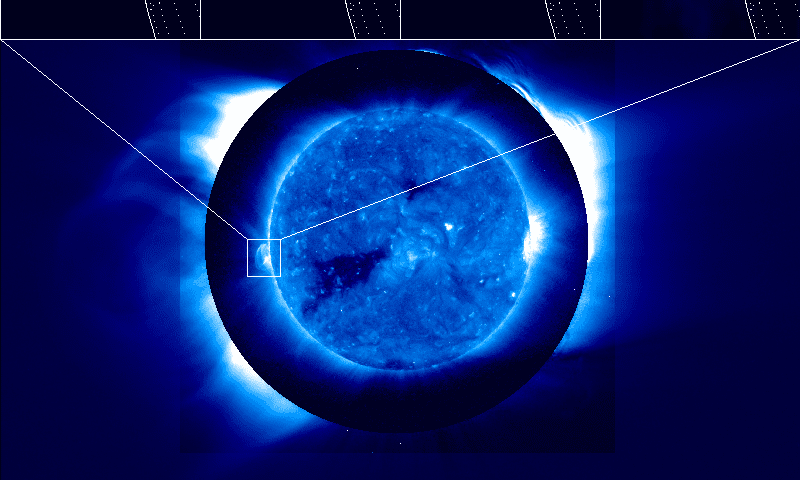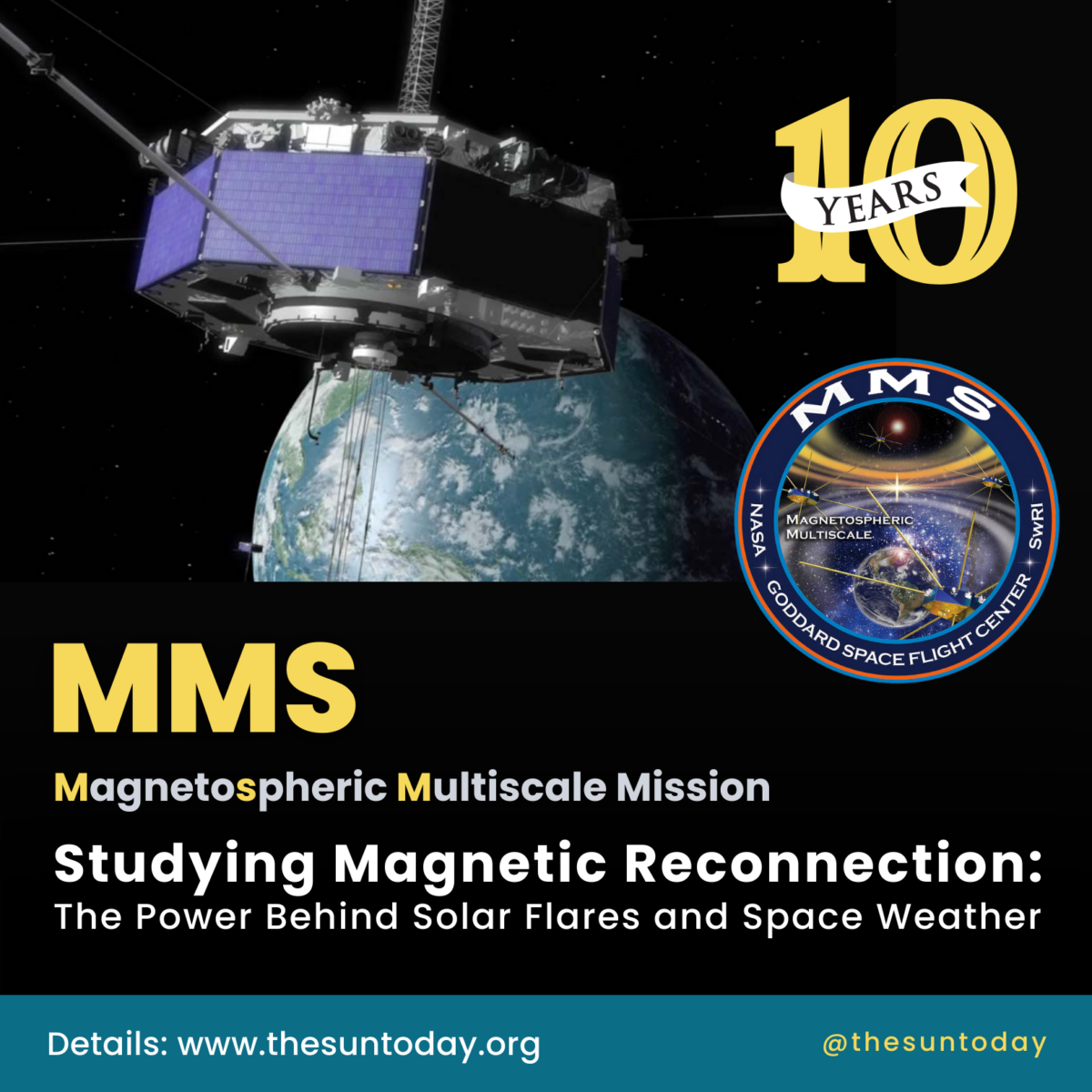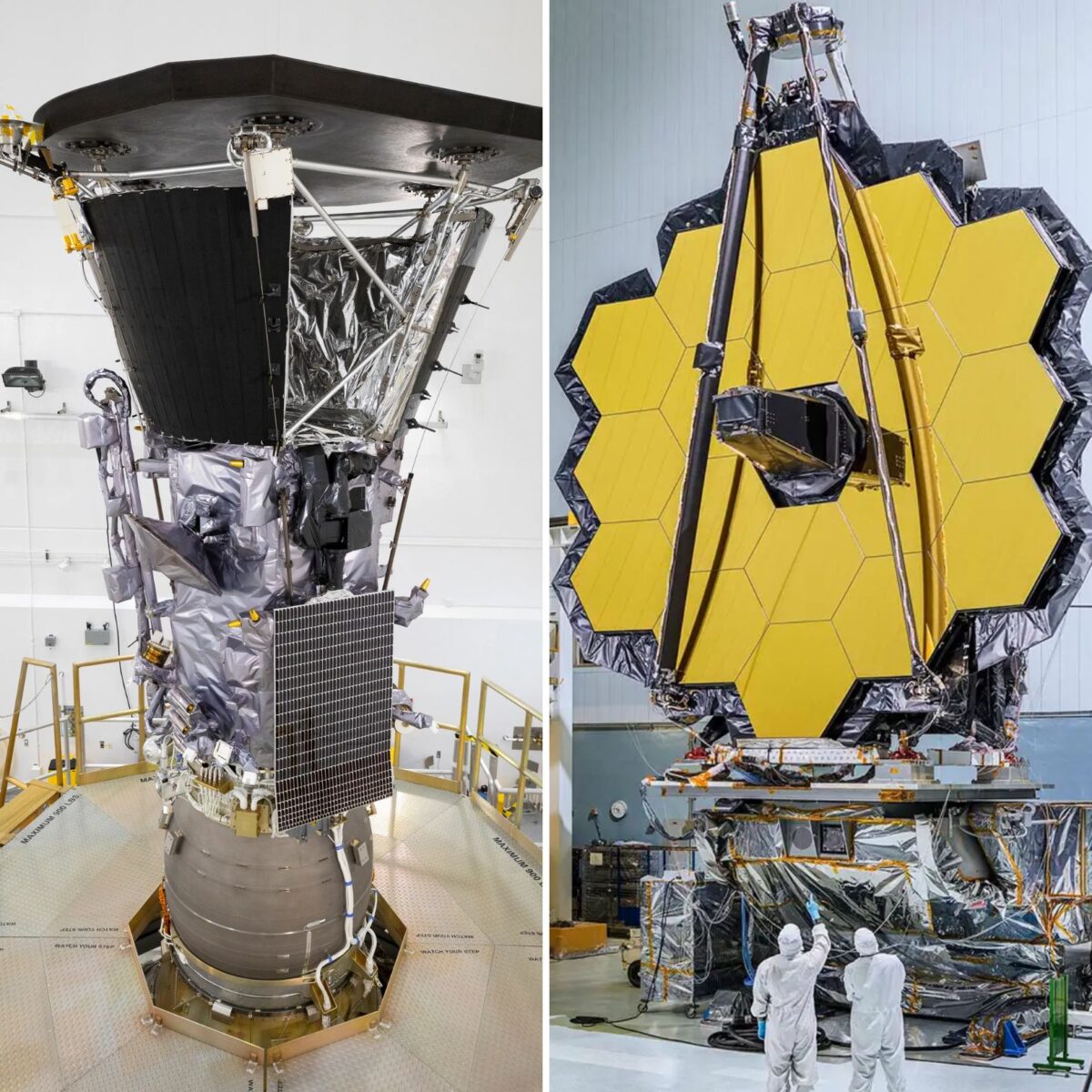
Ten years ago yesterday (5 February 2002) saw the launch of the Reuven Ramaty High-Energy Solar Spectroscopic Imager, or RHESSI (pronounced reh-see). RHESSI was designed to study particle acceleration and energy transport during solar flares by observing the highest energy X-rays and gamma-rays. These X-rays and gamma-rays are produced when particles (electrons and protons) are accelerated to very high energies, from a location high up in the solar corona, and then collide with the dense solar surface. The energy contained in these high energy particles is responsible for driving all the other emission we see during a flare. How these particles achieve such high energies remains one of the great mysteries in solar flare physics, and indeed, astrophysics in general.
The concept behind HESSI (as it was originally known) began in the 1970’s, but it wasn’t until 1997 that the technology and knowhow became available for it to finally be chosen by NASA to be built. Ahead of schedule and under budget, HESSI was set for launch on 4 July 2000 until disaster struck during pre-launch tests being carried out at JPL. The ‘shake-plate’, designed to mimic the vibrations experienced during launch, was set too high and the solar panels and telescope mounts were badly damaged. Despite this setback, the satellite was ready for launch 6 months later in December 2000, although more delays pushed it back to 7 June 2001. Just 6 days prior to launch, another setback occurred. The Pegasus rocket that was to carry HESSI into orbit went out of control during a test flight. This delayed the launch even further to 2002. But the saddest part of the story came just months before launch when Reuven Ramaty, a key figure in the design and construction of RHESSI, and a pioneer of gamma-ray astronomy, passed away. It was in his honor that the ‘R’ was added to HESSI’s name, and RHESSI remains the only NASA mission to be posthumously named after one of its scientists.
Originally designed to last for 2 years, RHESSI is still revealing new insights into solar flares a decade later. Having observed almost 60,000 flare, there are almost 1000 refereed publications that utilise RHESSI data in some way, and many of them are highlighted in the recently released book, ‘High-Energy Aspects of Solar Flares’. Some of these highlights include discovering that electrons and protons deposit their energy in different locations through the first ever gamma-ray imaging of a solar flare; we have seen high-energy radiation high up in the corona during certain events pointing to the energy release site itself; and that interplanetary proton storms are generated by flares themselves, rather than by CMEs which was previously believed. However, some of the most interesting findings from RHESSI had nothing to do with solar flares at all. The three optical telescopes onboard which are used to stabilize the spacecraft were used to measure the oblateness (the ‘bulge’) of the Sun itself to an accuracy of 0.001%; something that will help broaden our understanding of gravity. RHESSI is also able to detect Terrestrial Gamma-ray Flashes (TGFs) which stem from lightening here on Earth, which RHESSI observes when it passes through the earth’s shadow. Once a year, RHESSI is also able to observe gamma-ray emission coming from the pulsar at the centre of the Crab Nebula, and in 2004 it detected one of the greatest gamma-ray bursts ever recorded from a magnetar (a neutron star collapsing under its own gravity).

This image is from one of my own pieces of work involving RHESSI data, and on which Alex was a co-author. It shows two X-ray sources high up in the corona merging together during a CME eruption. The merging occurred as the CME began to accelerate and appeared to result in intense radio emission implying that particle acceleration had taken place. This suggested that both the flare and the CME were driven by the same energy release at a location high up in the solar corona.
Although RHESSI is still continuing to function its germanium detectors are suffering from extreme radiation damage, and the cyro-cooler which keeps them cold is failing. In November 2007 the detectors were annealed for the first time to repair the radiation damage. This was successful and bought a few more years observations until 17 March 2010 when RHESSI suffered another anomaly. For reasons still not fully understood, something appeared to trip the safety circuits onboard the spacecraft as it flew through the South Atlantic Anomaly, which led to a complete shut down, including the heaters to the batteries which eventually froze. The skill and dedication of the engineers at the University of Berkeley, California where RHESSI operations are carried out, eventually led to RHESSI being successfully recovered, and after a second anneal, RHESSI was in perfect working order. Even two of the detectors which never fully worked since launch were working at optimal efficiency! At this time, RHESSI is undergoing one final anneal before the detectors are damaged beyond repair. This should enable high-energy observations to continue until the peak of the current solar cycle. After RHESSI, NASA has no future plans to build and launch a replacement and so routine observations of the high-energy emission from the Sun may not be available again for several decades. However, a balloon experiment (GRIPS) and a sounding rocket (FOXSI) which are based on RHESSI technologies are currently scheduled for launch in the next few months.
On a more personal note, I have had the honor and privilege to be a part of the RHESSI team for 4 years while working at Goddard Space Flight Center until I returned to Ireland this time last year, and I have been making use of its data since I began my PhD in 2003. The mission Co-I, Brian Dennis, has been a huge influence on my career in solar physics, and I regard many of the RHESSI team as very dear friends. I’m sorry that I’m not able to be at Goddard to be with them to celebrate this landmark occasion but I shall raise a pint of Guinness in celebration here in Belfast! I look forward to seeing what else this incredible mission can teach us, in conjunction with the rest of the solar fleet, as we approach the next solar maximum.




